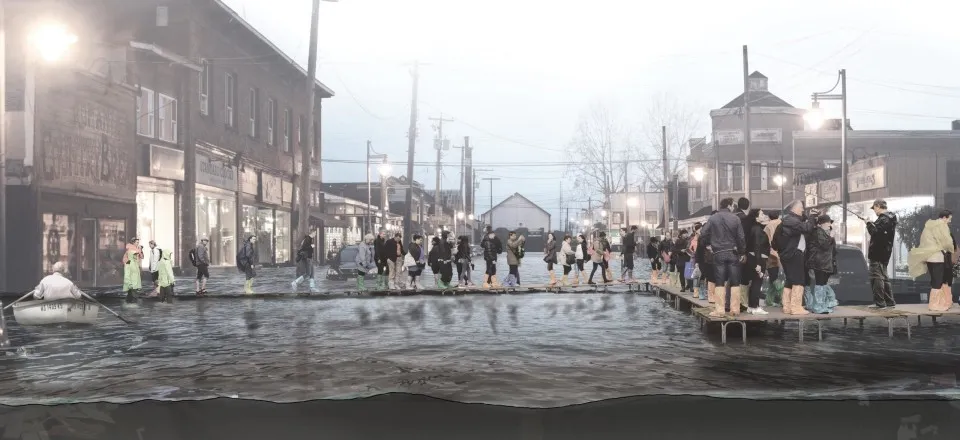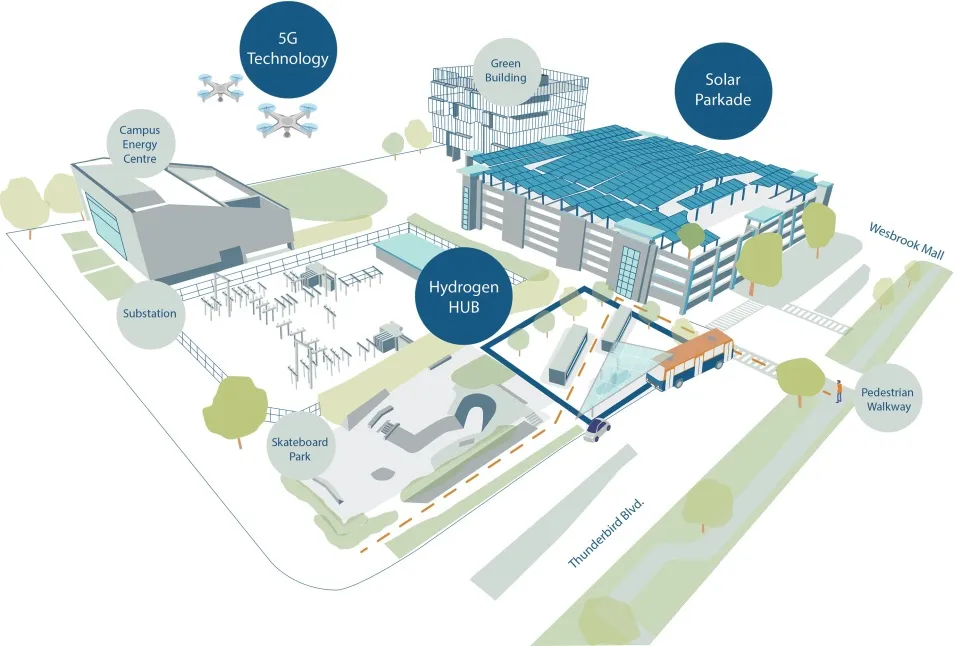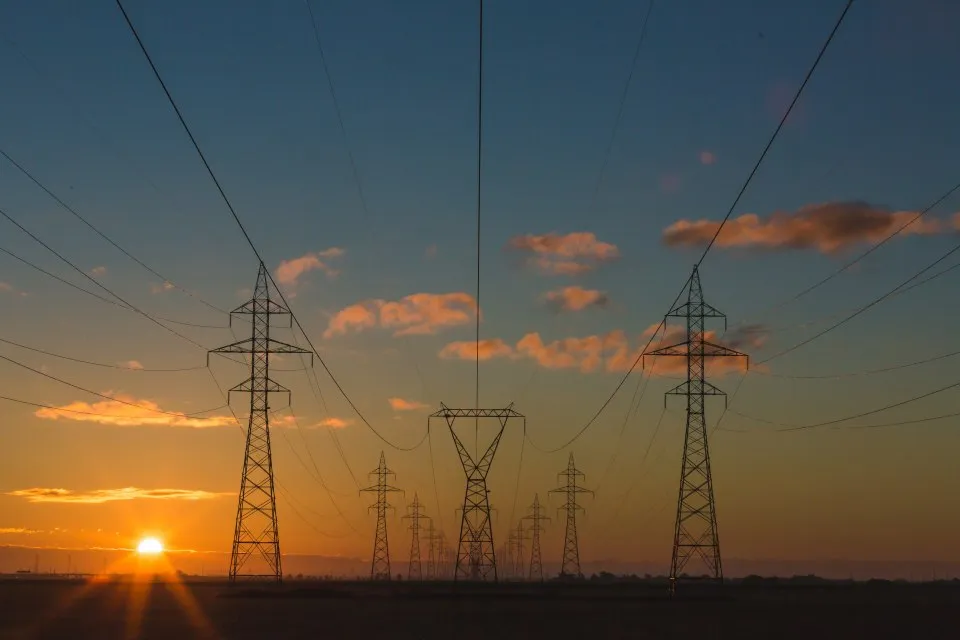UBC Applied Science profs talk climate change at university-wide symposium

As global temperatures rise at an accelerating pace, the need for countries to take urgent action against climate change has never been greater. Such action will require extensive cooperation and collaboration — not just among governments and organizations around the world, but also among research groups within universities like UBC.
In advance of the 2021 United Nations Climate Change Conference (COP26) in Glasgow, members of the UBC research community gathered online to take part in the virtual UBC Climate Change Research Symposium. The goal of the event, its organizers say, was to help foster connections among relevant research clusters across the university, “[enhancing] the potential of UBC researchers to impact climate change through research and innovation.”
“With this symposium, the Office of the Vice-President of Research and Innovation is responding to some of the strategic priorities as formulated in this year’s UBC climate emergency report,” said Dr. Mark MacLachlan, a UBC chemistry professor and co-chair of the symposium’s steering committee. “The combination of keynote addresses and interdisciplinary panel discussions is intended to ignite new collaborations and stimulate new climate change research at UBC.”

Over the course of two days, participants were treated to a series of wide-ranging talks from over 40 researchers across both UBC campuses, including engineering professors Dr. Kasun Hewage, Dr. Walter Merida and Dr. David Wilkinson. UBC Applied Science has long played an instrumental role in advancing climate change-related research and education at the university, which currently ranks third in the world in climate action.
“The faculty and the professions that we represent focus on integrating technology, policy and design to not only mitigate climate change through low-carbon innovations, but also to adapt our built environment to climate change to create safe, healthy, thriving communities,” said Dr. James Olson, dean of the Faculty of Applied Science.
“[We do this] knowing that we will see increased storms, sea level rise, heat waves, water insecurity, food insecurity, wildfires — and perhaps even most importantly, recognizing that climate change has the potential to dramatically drive increased human inequality.”
In the event’s first panel discussion, civil engineering professor Dr. Hewage offered a sobering, yet ultimately hopeful, view of the state of global climate action. While governments and organizations have made commitments to reduce emissions, he said, we are not yet on track to reach global net-zero energy targets. This is partly because “the life cycle environmental impacts of making and disposing of many green technologies” — certain kinds of solar panels, electric vehicle batteries, and building components among them — "still outweigh their benefits in the operational phase.”
It is also because many environmental targets and policies do not adequately reflect local conditions. For example, the Government of Canada's goal for every new light-duty vehicle sold in the country to be zero-emissions by 2035 appears to make sense in a province like British Columbia, which has a mainly hydro-based electrical grid and sufficient renewable energy for charging batteries. But the same policy may not currently be suitable in Alberta, Saskatchewan and other places where the electricity would come primarily from fossil fuels.
“Cookie-cutter emissions reduction targets [won’t work],” said Dr. Hewage, who also serves as the FortisBC Smart Energy Research Chair at the School of Engineering on UBC’s Okanagan campus. “There can be bottom-up approaches from the municipalities, provinces, and maybe countries, but what’s missing right now is [an effective] top-down approach.” If international bodies can come together to establish region-specific climate action plans, including the sharing of critical resources, then there is a chance we will reach our targets down the road.

In another session, aimed at exploring how society can adapt to climate change, mechanical engineering professor Dr. Merida described a potential adaptation strategy known as “urban exaptation”, or the use of existing urban assets in new ways. Like bird feathers originally evolving to regulate body temperature before enabling flight, “city design and other areas of technology and engineering can help us to promote human behaviour that is more compatible with sustainability and climate action.”
In a bold demonstration of the concept, Dr. Merida is leading a project to convert a city block on the UBC campus into a smart energy district. By equipping the Thunderbird Parkade with solar panels, a battery bank, a smart energy control system, a water electrolyzer, 5G capabilities and more, the project will show how parking garages and cars — "two of the most underutilized assets in the world" — can be repurposed to deliver electricity to the grid. Some of this electricity would be used to generate and store hydrogen for refueling hydrogen vehicles or space heating on campus.
"We are going to connect the entire city block into a single system that can be optimized for energy use, cost, carbon emissions, water use and other things,” said Dr. Merida, who also serves as both associate dean of research and industrial partnerships at UBC Applied Science and senior advisor to the president and vice-chancellor at UBC. “Once we have learned how this system works on campus, we can create digital twins on the cloud which can then be scaled up […] for cities and other countries around the world.”

Making new use of existing assets is crucial to winning the battle against global warming. Dr. Merida noted how our energy sources — biomass, coal, oil, gas, hydrogen — have become progressively less carbon-intensive over the past few centuries. Unfortunately, each transition has taken about 100 years: “The normal innovation processes and the normal investment processes are too slow and too small to really face the challenge. So one idea is to start applying this idea of urban exaptation [to accelerate the decarbonization process].”
Finally, in a keynote address titled “Breaking the Energy/Climate Change Logjam”, Dr. David Wilkinson provided a compelling overview of the global energy sector’s approaches to achieving net zero by 2050. Springboarding off two landmark climate change reports released earlier this year —the Intergovernmental Panel on Climate Change report and the International Energy Agency (IEA) report — Dr. Wilkinson highlighted the importance of renewable energy, electricity storage, hydrogen and carbon capture, utilization and storage technologies in meeting net zero targets.
“We've been very successful in the past at solving what I would characterize as smaller problems, such as DDT, and chemical toxicity, the acid rain problem and even ozone depletion,” said Dr. Wilkinson, a chemical and biological engineering professor and Canada Research Chair in Clean Energy and Electrochemical Technologies (Tier 1) at UBC. “But this is really, as many people call it, the Everest of problems for this planet.”

Despite the enormous challenges that lie ahead, Dr. Wilkinson expressed hope that we will be able to move from “a narrow possibility to a practical reality” with respect to achieving net zero by 2050, as IEA executive director Fatih Birol put it in his foreword to the organization's report.
“A lot of these technologies are there or very close to being there,” he said. “The issue that I see is the coordinated effort and the scale of that coordinated effort that's required. We need politics to be on the side of this — not to be divisive, not to politicize what we're all trying to do here.
“We're at a point where we can start implementing solutions, and we need to be doing that immediately. But how do we get to that point with our government? And how do we direct policy and voters to get on-side and move forward? This is the critical problem.”
For more information about the symposium, including videos of select presentations, please visit the UBC Climate Change Research Symposium website.